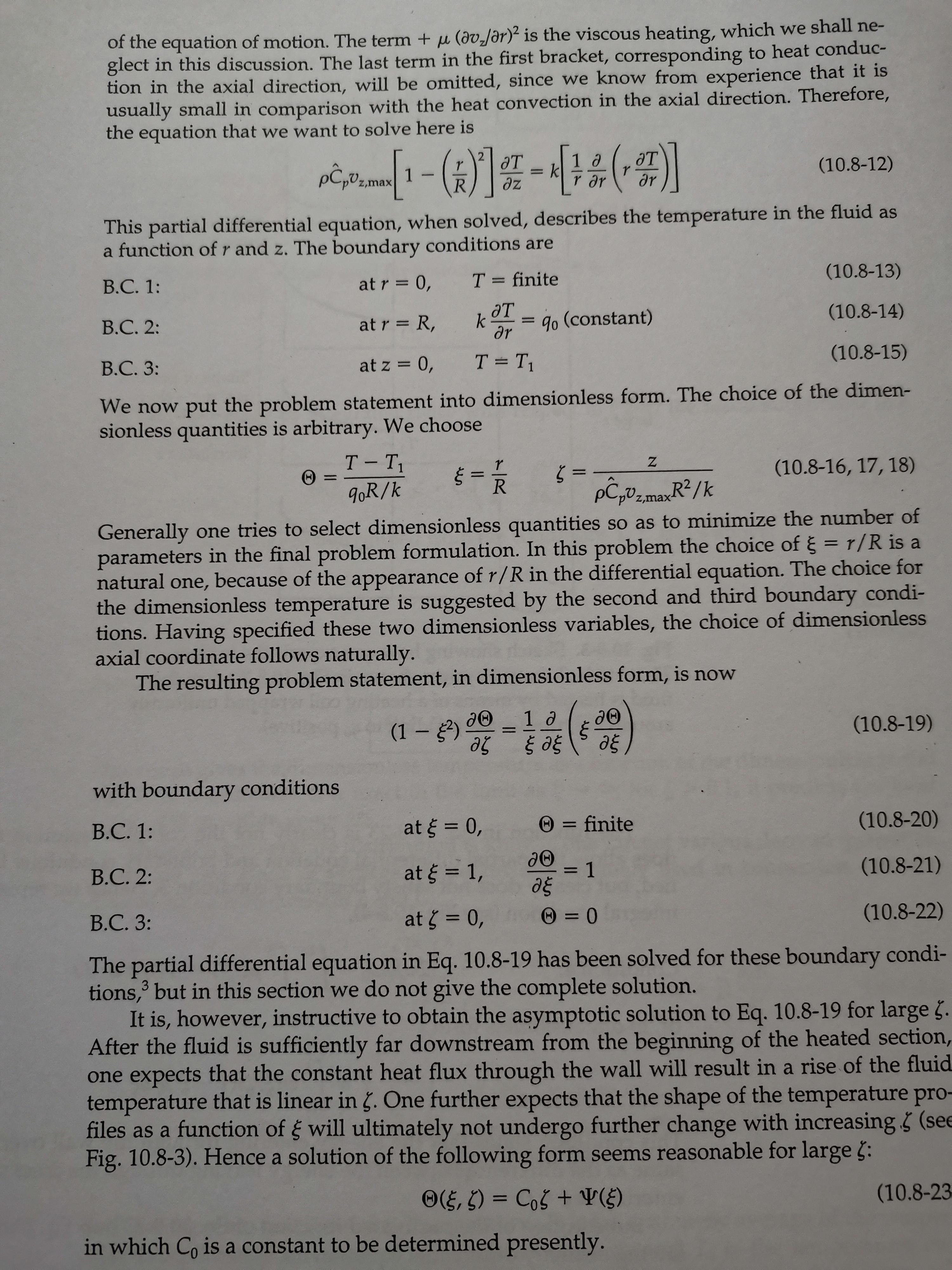Answered step by step
Verified Expert Solution
Question
1 Approved Answer
Please assist me for the complete derivation of this equation from the transport phenomena textbook(2nd revised edn)? Specifically, how to get from equation 10.8-12 to
Please assist me for the complete derivation of this equation from the transport phenomena textbook(2nd revised edn)?
Specifically, how to get from equation 10.8-12 to 10.8-19?
Kindly refer to the photo attached for more details.
Appreciate your help on this. 
of the equation of motion. The term + u (dv.fr) is the viscous heating, which we shall ne- glect in this discussion. The last term in the first bracket, corresponding to heat conduc- tion in the axial direction, will be omitted, since we know from experience that it is usually small in comparison with the heat convection in the axial direction. Therefore, the equation that we want to solve here is 1 a p (10.8-12) Z,max R. dz r ar r This partial differential equation, when solved, describes the temperature in the fluid as a function ofr and z. The boundary conditions are B.C. 1: at r = 0, T = finite (10.8-13) k OT 9o (constant) r B.C. 2: at r = R, (10.8-14) B.C. 3: at z = 0, T = T1 (10.8-15) %3D We now put the problem statement into dimensionless form. The choice of the dimen- sionless quantities is arbitrary. We choose T- T1 9oR/k (10.8-16, 17, 18) %3D PC,02,maxR /k Generally one tries to select dimensionless quantities so as to minimize the number of parameters in the final problem formulation. In this problem the choice of = r/R is a natural one, because of the appearance ofr/R in the differential equation. The choice for the dimensionless temperature is suggested by the second and third boundary condi- tions. Having specified these two dimensionless variables, the choice of dimensionless axial coordinate follows naturally. The resulting problem statement, in dimensionless form, is now 1 a (1 2) d0 (10.8-19) with boundary conditions B.C. 1: at = 0, O = finite (10.8-20) %3D B.C. 2: at = 1, 3D1 (10.8-21) %3D B.C. 3: at = 0, (10.8-22) %3D %3D The partial differential equation in Eq. 10.8-19 has been solved for these boundary condi- tions, but in this section we do not give the complete solution. It is, however, instructive to obtain the asymptotic solution to Eq. 10.8-19 for large . After the fluid is sufficiently far downstream from the beginning of the heated section, one expects that the constant heat flux through the wall will result in a rise of the fluid temperature that is linear in g. One further expects that the shape of the temperature pro- files as a function of g will ultimately not undergo further change with increasing (see Fig. 10.8-3). Hence a solution of the following form seems reasonable for large 5: 3 O(E, 5) = Co5 + V(E) (10.8-23 in which Co is a constant to be determined presently.
Step by Step Solution
There are 3 Steps involved in it
Step: 1

Get Instant Access to Expert-Tailored Solutions
See step-by-step solutions with expert insights and AI powered tools for academic success
Step: 2

Step: 3

Ace Your Homework with AI
Get the answers you need in no time with our AI-driven, step-by-step assistance
Get Started


